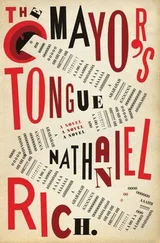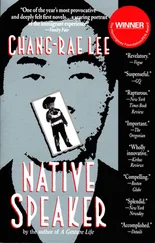Another primary tactic for controlling women is the manipulation of information. The men manipulate history in order to eradicate a precedent of female autonomy by reinterpreting through the contemporary trope of male indulgence: “‘Men are by nature kind and considerate, and a charming woman’s eagerness to play at being a physician or a Congressman or a scientist can be both amusing and endearing; we can understand, looking back upon the period, how it must have seemed to 20th century men that there could be no harm in humoring the ladies’” (72). This form of manipulation seeks to control aspirations. Another kind of linguistic manipulation seeks to grant women the illusion of control and input while strictly circumscribing the options they can exercise. During one argument, Thomas says “‘Rachel,… it doesn’t make the slightest difference whether you approve or not. It would be pleasant if you did approve, of course. I make every effort to consider your personal wishes with regard to my children whenever I can. But when you refuse to be reasonable you leave me no choice but to ignore you’” (148). Women’s supposed autonomy is thus predicated on their fundamental agreement with men.
Other types of manipulation are even more insidious. Nazareth discovers how kindness can function like manipulation when Jordan Shannontry begins to act as her backup in negotiations with the Jeelods. He pays her attention and compliments that culminate in presenting her with a yellow rose. When she tells him she loves him, however, he tells her father, and she becomes a victim of abuse and ridicule from both her father and her husband (193–97). The manipulation of religious feeling, as well as emotional feeling, is touted as another way to control women (130). As Nazareth remarks, “There was no end to the inventiveness of men when their goal was to prove their mastery” (176). The tactics used are multiple, and they are interesting not only for their variety, but for their very existence. By demonstrating the need to constantly reinforce mastery, Elgin demonstrates the instability of the dynamic, and it is this inherent instability that creates the possibility of change and thus of successful rebellion.
Indeed, Native Tongue begins with a preface that sounds a note of hope. Written in an even more distant future by a woman who holds the title of executive editor, the (fictional) preface explains that the novel is being published by a coalition of institutions, including the Historical Society of Earth, WOMANTALK, and the Láadan Group (6). This strategy of retrospective annotation implies that the experiment that was Láadan really did change the world, demonstrating the contingency of any system of oppression.
Elgin’s novel explores other familiar feminist issues, such as the inability of resources to keep up with modern global — and in this case, intergalactic — capitalism, the gendered structure of government, the malleable nature of power, the gendered relationality of labor, and the distinction between the artificial and the natural. But it is the book’s two main themes of constitutive language and linguistically enforced gender relations that reflect Suzette Haden Elgin’s primary contribution to feminist thought.
Native Tongue was originally published in 1984 by DAW Books, a respected science fiction imprint. Contemporary reviews were positive to mixed. While conservative journals faulted the book for what was seen as lack of characterization or social logic ( Publishers Weekly ) and boring didacticism used to rationalize her language experiment ( Booklist ), more progressive and feminist outlets praised the book for its significant themes. Fantasy Review noted that “Elgin is on strongest ground when she writes of male/female relations, the work of the linguists, and the feminists’ struggle to hide the development of their own language from the men. Though structurally flawed, her novel is well-written, its people are strong characters, and its themes are well worth considering” (Taormina). Carolyn Heilbrun, writing in the Women’s Review of Books , praised as “exciting” Elgin’s understanding “that until women find the words and syntax for what they need to say, they will never say it, nor will the world hear it.” The Voice Literary Supplement praised her for “hav[ing] insight into cultural survival, colonialism, pidginization as well as into anger other than her own” (Cohen). These reviews all appear to agree with Elgin that oppression and language can be linked, and that language can also be a tool of revolution.
Native Tongue is frequently compared to Margaret Atwood’s The Handmaid’s Tale , another feminist, dystopian science fiction novel. The novels have similar settings: near-future versions of the United States where women have been stripped of their rights and are under the legal and often physical control of men. But where The Handmaid’s Tale was praised for the spooky possibility of its imagined future, the scenario in Native Tongue has, according to Elgin herself, been dismissed as “improbable” and something that “could never happen in the United States” (“Women’s Language” 176). The Handmaid’s Tale was a bestseller and has been considered a classic since its 1986 publication, while Native Tongue went out of print in 1996 and maintained only a small, though enthusiastic, following among readers and scholars.
The context of the early 1980s, when Elgin was writing Native Tongue , is important in understanding both the social concerns that motivate the text and its intellectual position. Feminism in the late 1970s and early 1980s, especially academic feminism, was concerned with several sets of questions. Central among these was the question of whether gender is essential or constructed. If gender is essential, biological, and material, then the differences between men and women are set in nature. If gender is constructed, then it has nothing (or little) to do with our bodies and everything to do with social expectations and socialization. This debate had practical consequences, because an answer, even a contingent, personal answer, helped to point one towards an appropriate strategy of revolution. If gender is essential, then feminists should work for equal valuation of the inherent qualities of both men and women. If gender is constructed through socialization, then we should emphasize different relations and social practices that would challenge gender roles. This larger question carries other issues along with it. If gender isn’t essential, as most feminists seemed to conclude, then on what can we base collective action? Is separation an effective political strategy? How would — or should — sexuality change along with gender roles?
A second major concern of 1970s and 1980s feminism, as previously noted, lay with the power of language to structure and express, and thus make possible, different perceptions. Julia Kristeva, Hélène Cixous, and Luce Irigaray all advocated variations on the idea that language as we know it encodes masculinist perceptions and values, in effect rendering women silent. They advocated the adoption of a women’s language that is non-linear, sensual, and true to women’s experience in patriarchal culture. As noted, Elgin’s novel endorses the view of language as constructivist. In its very structure, Native Tongue highlights the power of language to construct reality. In its juxtaposition of various points of view, and its alternation between narrative and historical documents concerning the oppression of women in its various forms, the novel necessarily “engage[s] active reader involvement in the de/construction of textual meaning” (Rosinsky 107). By choosing such a structure, Elgin not only avoids burdening her narrative with history, but also enacts the very constitutive power of language she demonstrates.
Читать дальше












